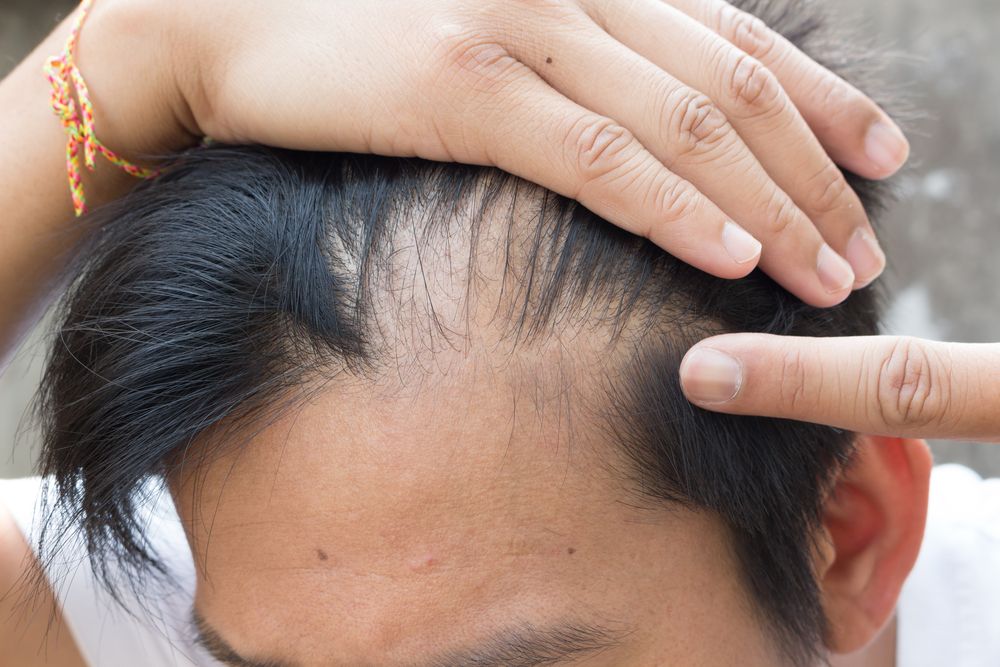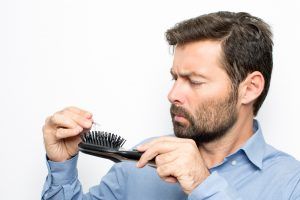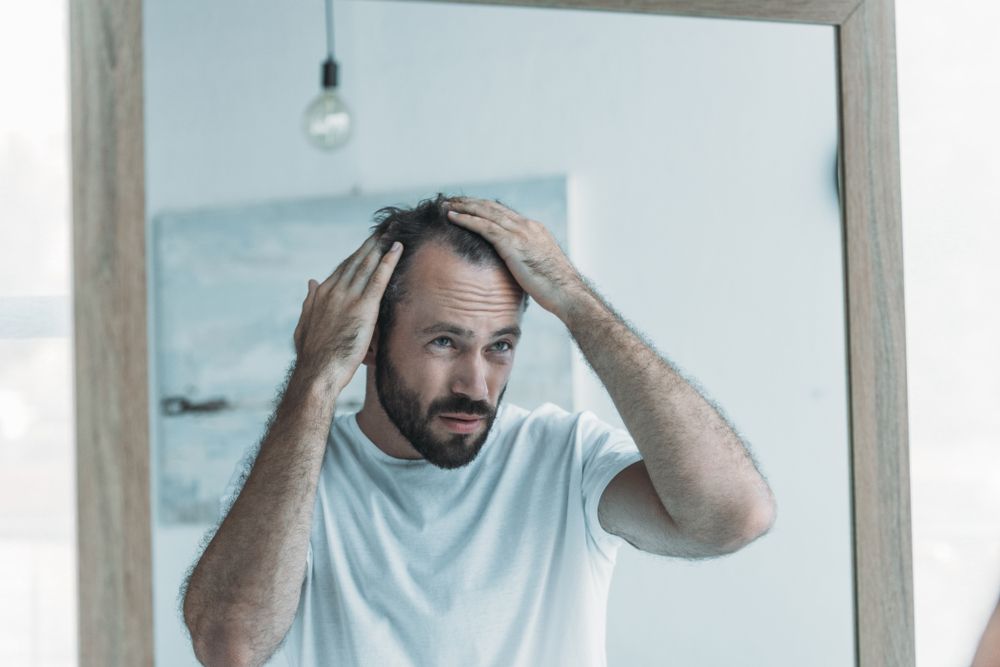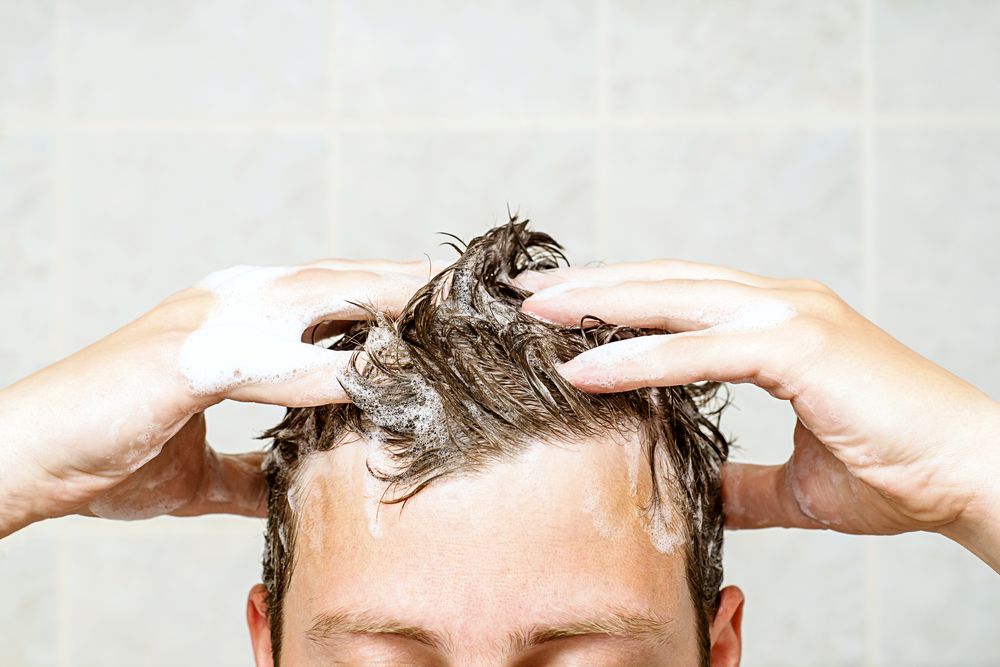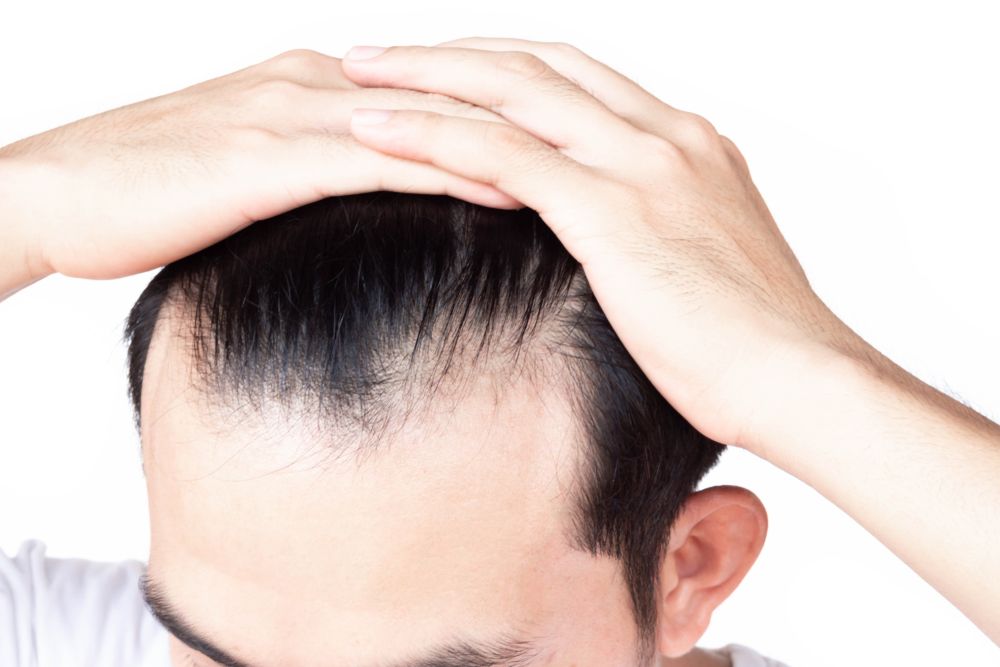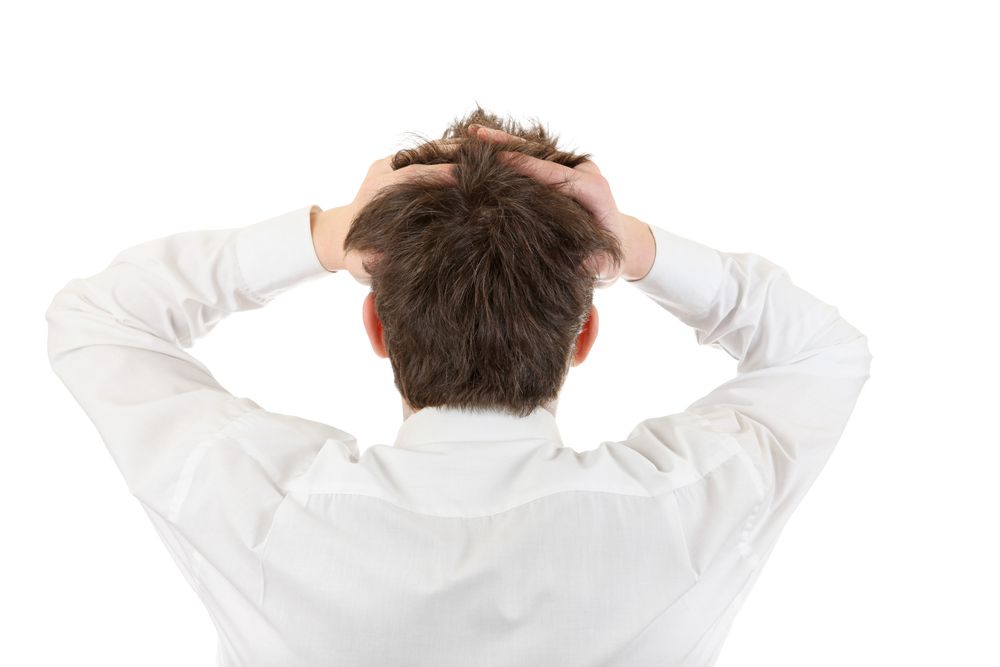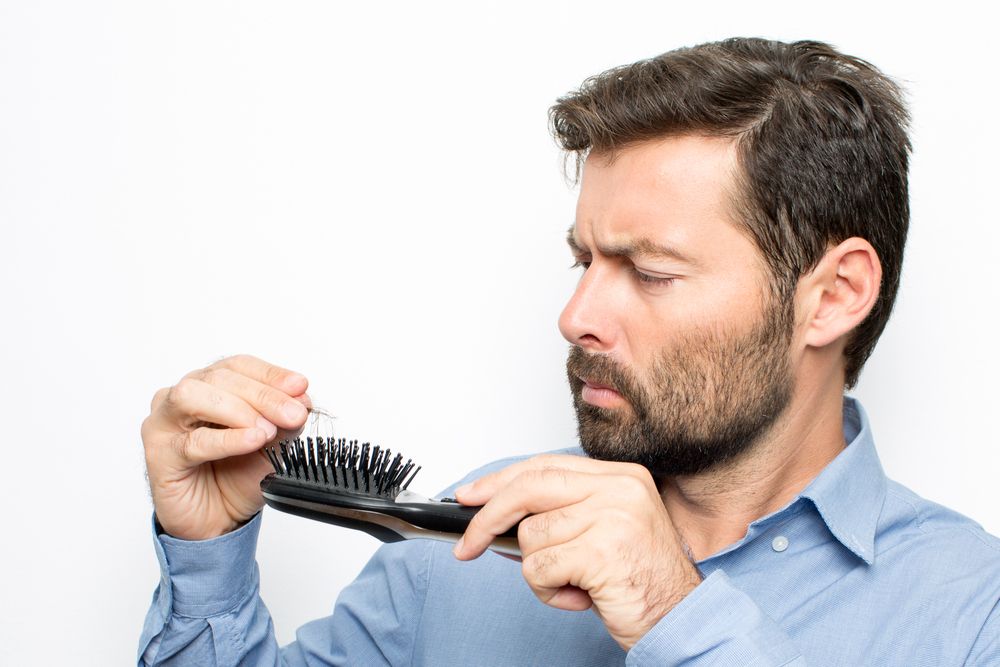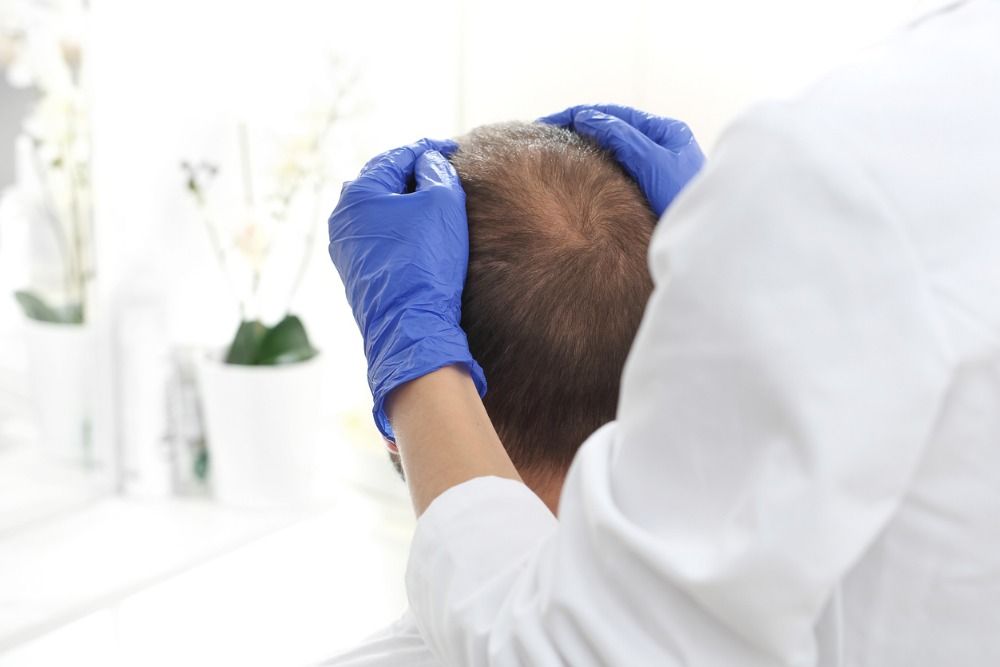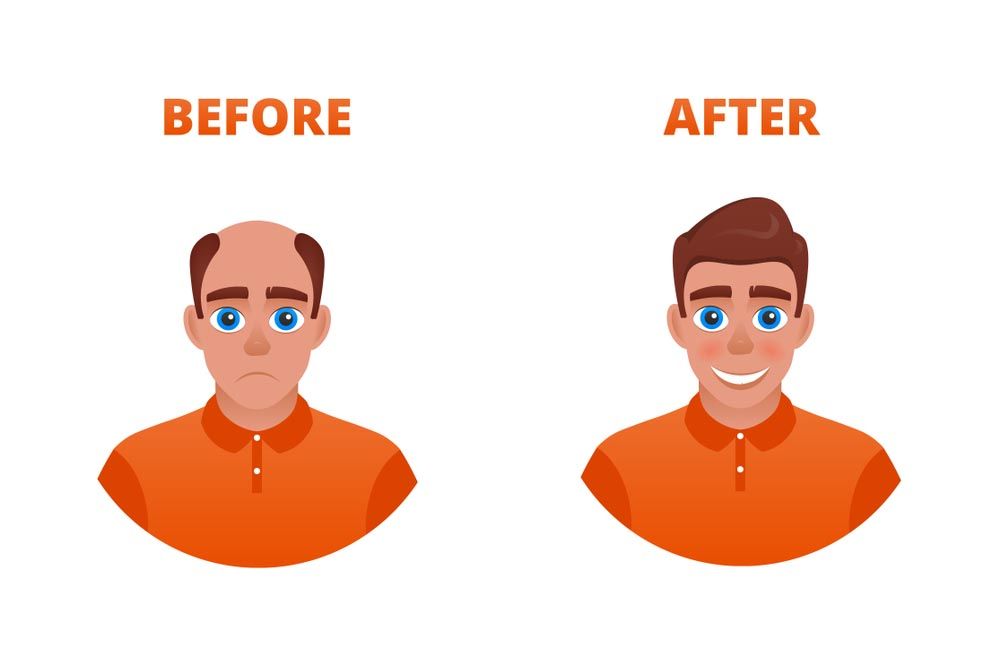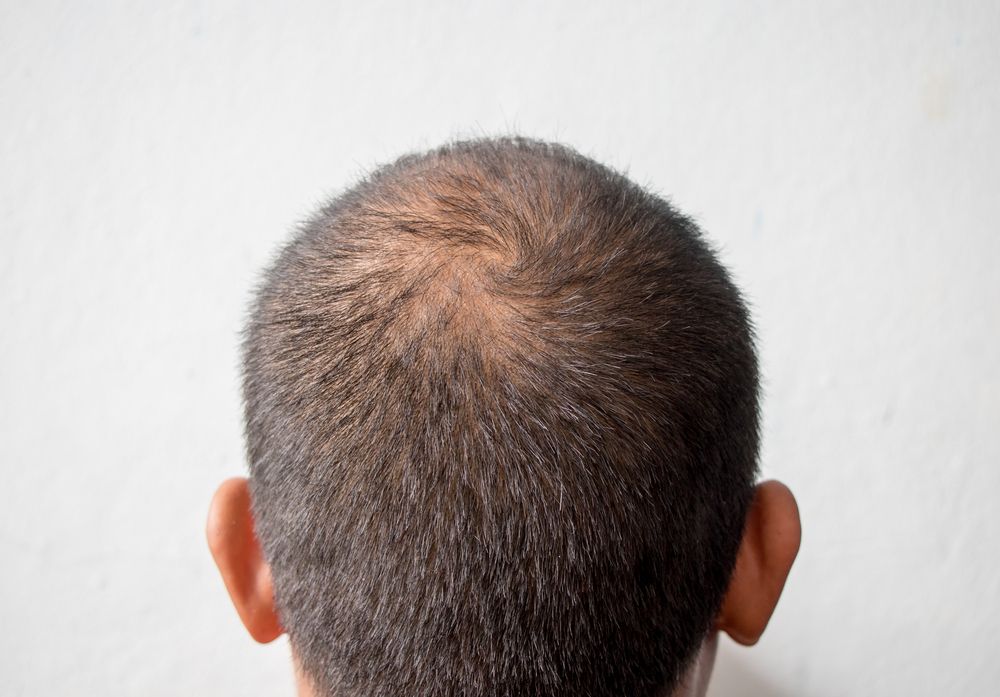Hair loss is a common occurrence in both men and women, but it is particularly associated with men. (Learn More)
There are several reasons that you may be losing hair. A dermatologist can help you understand if you experience typical balding or an underlying condition. (Learn More)
There are several treatments for hair loss, including over-the-counter and prescription drugs as well as medical procedures. (Learn More) Prevention efforts can also help you reduce how much hair you lose. (Learn More)
What Is Hair Loss?
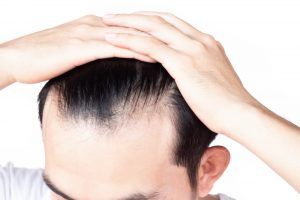
Hair loss is a normal occurrence for many men around the world. Everyone loses some hair every day — between 50 and 100 hairs on average. When you lose more, and the hair is no longer being replaced, it can lead to bald spots or receding hairlines.
There are many reasons that men may lose their hair, including heredity, hormonal changes, medications, or an underlying medical condition. Women may experience hair loss too, but the experience is more common for men.
Hair loss may affect just the head, which is typically called balding, androgenic alopecia or male pattern baldness (MPB). Hair loss can also occur all over the body in some instances.
There are several causes or risk factors for hair loss.
- Family history, genetics, or heredity
- Significant, rapid weight loss
- Aging
- Hormonal changes like fluctuating testosterone levels
- Medical conditions, like diabetes or lupus, or some medications
- Treatments like radiation
- Stressful life events
- Certain hairstyles or hair treatments, like tight pigtails or braids
Hereditary hair loss with age, or baldness, is the most common form of hair loss, especially for men. MPB accounts for 95 percent of men’s hair loss.
Many men choose to let hair loss run its course without hiding or treating the condition. It can begin as early as 21 years old. By age 35, two-thirds of American men will experience some degree of hair loss, and 85 percent will have some level of hair loss by 50 years old.
Although this condition is both normal and common, many men are unhappy with their appearance and find that losing their hair causes them stress. There are some medical approaches to managing hair loss. If there is an underlying condition causing hair loss, there may be specific treatments that can slow or stop the condition.
Diagnosing Hair Loss

Balding can occur in a few patterns for men.
- Slow thinning on top of the head: This type of hair loss is the most common form in men, and it may also affect women with age. Typically, hair begins to lessen at the forehead, forming a shape resembling an M. When women start to lose their hair, they do not experience as much loss around the forehead, but they may see a broadening in the part of their hair.
- Round or patchy bald spots: Some men experience coin-sized, smooth bald spots around the scalp. This can sometimes occur around the beard and eyebrows too. Skin may become tingly, tender, or itchy before the hair falls out.
- Rapid loosening of hair: This form of hair loss is less hereditary or hormonal. It may involve more of an emotional or physical trauma, which causes a larger patch of hair to suddenly loosen and come out. This can cause handfuls of hair to come out when brushing, combing, washing, or even after gently tugging. This can lead to overall thinning rather than bald patches.
- Full body hair loss: Like loosening hair, losing hair all over the body is less likely to be due to heredity. Instead, it is likely caused by a medical condition or a treatment for that condition, such as chemotherapy. If treatment stops or the condition goes away, hair will likely grow back.
- Patches or scaling on the scalp: When the skin is impacted enough for hair to fall out, there is typically an underlying condition like ringworm. This is a fungal infection and very treatable.
Treatment for Hair Loss
When hair loss occurs in a regular, receding pattern around the temples or the crown of the head, this indicates male pattern baldness (MPB). Other patterns of balding or underlying skin changes, especially redness, scaling, and itching, typically indicate a different condition like alopecia or a medical problem that needs a different approach.
Work with your dermatologist to understand potential causes of balding, and see if you have a condition that needs to be managed. This may require a scalp biopsy, where the dermatologist takes a small sample of your scalp. The dermatologist may try a pull test to see how many hairs come out and how strong your hair follicles are. You may also need a blood test if your dermatologist suspects an underlying medical problem.
If you have normal MPB, there are both over-the-counter and prescription treatments available. OTC options include:
- Minoxidil (Rogaine). This medication is applied to the scalp. It can both stop hair from thinning and stimulate hair growth on the top of the scalp. It is the only hair product approved by the U.S. Food and Drug Administration (FDA) for hair loss in both men and women. Although it is available without a prescription, dermatologists may recommend this product in combination with a prescription drug.
- Laser devices. Brushes, combs, and some handheld devices have been designed to emit a special, laser wavelength of light that can stimulate hair growth and improve youthful hair appearance for some people. The FDA has classified these as medical devices, so they are monitored and regulated for effectiveness and safety. The long-term effectiveness of laser devices is not known at this time.
Your dermatologist may prescribe some medications alongside OTC options, or they may offer them if OTC care does not work for you. Some prescription hair loss drugs include:
- Finasteride (Propecia). This medication comes in pill form, and it has been approved by the FDA for men with MPB. It stops the body from making dihydrotestosterone (DHT), which can influence changes in hair. In 88 percent of men, it slows hair loss. In 66 percent of men, it helps stimulate hair regrowth.
- Hair loss associated with inflammation in your body, such as from an autoimmune condition like lupus, can be managed or slowed with a corticosteroid. It can also help if you have alopecia areata. Corticosteroids are different from anabolic steroids, but speak with your doctor if you have any concerns about taking a steroid-based medication.
There are also some procedures, like hair transplantation, scalp reduction or expansion, and even scalp flaps that can manage hair loss or improve hair appearance.
A new drug is being researched as an approach to treating baldness. In May 2018, an osteoporosis drug was found to reduce a protein called SFRP1 as a side effect. This protein may stop follicles from growing hair, and reducing the amount in the body can slow hair loss.
While this drug may be an exciting medication to add to the numerous options for treating hair loss, it may not work for everyone. Work with a dermatologist to find the best approach to treating your hair loss.
The approach to treating hair loss is very individual. For more than half of men, OTC medications like Rogaine work well to slow hair loss and even stimulate hair growth. However, this treatment does not work for everyone, and it may not work forever, so finding a new treatment plan can take some time.
Hair Loss Prevention and Management
In addition to a diagnosis and medical treatment, there are some prevention strategies that can help reduce hair loss or prevent bald spots.
- Do not put hair in tight hairstyles like braids or ponytails.
- Do not compulsive twist, pull, or rub hair, even if it itches.
- Wash hair gently, and be careful with tugging while brushing.
- Be very careful with heated styling tools, perms, and hot oil treatments.
- Speak with your doctor about any medications and supplements that may impact hair loss.
- Protect your head and hair from sunlight or other forms of ultraviolet light.
- Quit smoking, as this is linked to baldness.
- During chemotherapy, ask about a cooling cap, which can reduce hair loss during the treatment process.
If you experience typical male pattern baldness, your dermatologist can guide you to some options like Rogaine shampoo or prescription medications that can slow how much hair you lose. If there is an underlying problem, your dermatologist can help you implement prevention methods and refer you to additional treatment if needed.
References
Hair Loss. (February 12, 2019). Mayo Clinic.
Hair Loss: Overview. American Academy of Dermatology Association (AADA).
Introduction. American Hair Loss Association.
Hair Loss: Diagnosis and Treatment. American Academy of Dermatology Association (AADA).
Can a Drug Cure Baldness? New Study Shows Potential. (April 17, 2019). Healthline.

